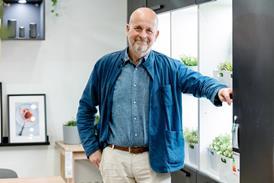Machin at M&S one year in: ‘We are always positively dissatisfied’

“All new leadership teams need to arrive like a thunderclap whether they’re coming from inside or outside the business to create that new sense of direction, electricity, appetite for change,” said Marks & Spencer chair Archie Norman as the retailer unveiled full year results.
“All new leadership teams need to arrive like a thunderclap whether they’re coming from inside or outside the business to create that new sense of direction, electricity and appetite for change,” said Marks & Spencer chair Archie Norman as the retailer unveiled its full-year results.
Already have an account? Sign in here



















